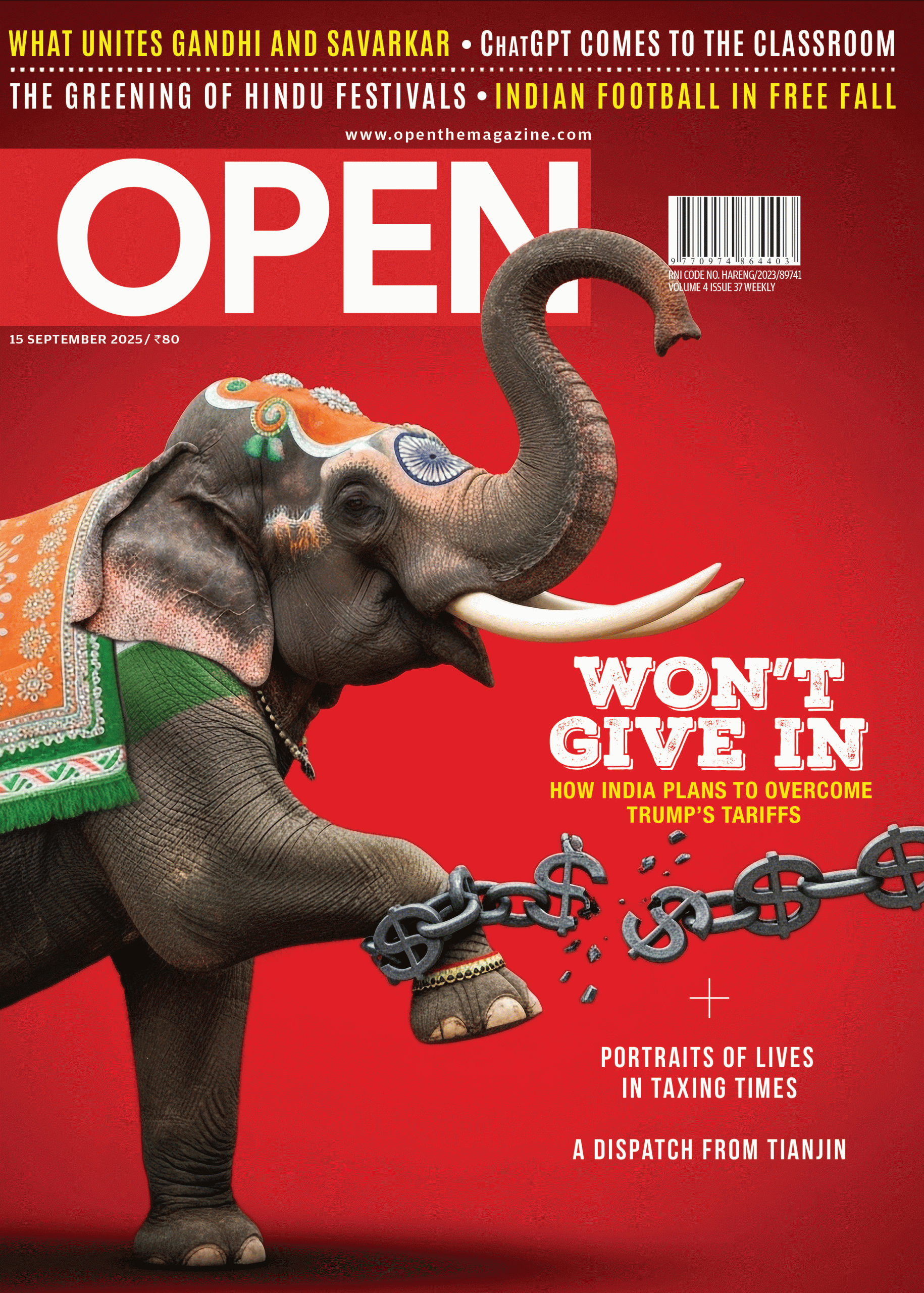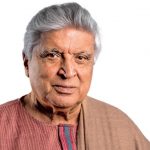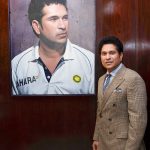Who Needs Parliament?
The BJP does an Anna, democracy be damned
 Jatin Gandhi
Jatin Gandhi
 Jatin Gandhi
|
30 Aug, 2012
Jatin Gandhi
|
30 Aug, 2012
/wp-content/uploads/2015/11/parlia.jpg)
The BJP does an Anna, democracy be damned
Monday, 27 August. Parliament was in session. Prime Minister Manmohan Singh, who speaks very rarely, gave a detailed statement on the charges against his government in what is being described as the largest ever scam in the history of Independent India. He even read out an Urdu couplet in defence of his general state of existence, which is stony silence. The leaders of the opposition in both Houses of Parliament, the Lok Sabha and Rajya Sabha, reacted sharply to the PM’s defence. Half a dozen ministers of the Union Cabinet defended the PM and countered the principal opposition party’s allegations against their government. All in a day’s work when Parliament is in session, one would think. Only, the principal opposition party, Bharatiya Janata Party (BJP), and the ruling Congress chose to do all this not within the two Houses of the Legislature, but outside—in front of TV cameras.
Manmohan Singh had first tried to make his parliamentary statement shortly after noon that day in the Lok Sabha and later in the upper house, but the din created by BJP MPs saw him give up after reading a few paragraphs. Instead, he chose to address waiting TV cameras outside the main parliament building but within the complex. Soon after his statement, leaders of the opposition in the two Houses—Sushma Swaraj and Arun Jaitley—held a press conference tearing into the PM’s defence with a point-by-point rebuttal. Breaking away from the practice of holding briefings within an allotted conference room of Parliament House, which allows no direct TV uplinks, the party issued its briefing at its Ashoka Road headquarters so that news channels could beam the event live.
The two opposition leaders seemed to have strong arguments against the PM’s defence, but they did not care to hold him accountable on the floor of either House, where he could have been questioned directly. Then again, what Sushma Swaraj said at the BJP press conference could not have been said in Parliament. She accused the Congress of having got hefty kickbacks on coal-field allocations, which are in the eye of the storm. “I say this in clear rustic language, the Government has made a fat sum on the allocations,” Swaraj said towards the end, using a colloquial Hindi phrase “motaa maal mila hai”. A Tamil journalist asked her to translate that into English. “Write it in Hindi, as it is, or you will lose the substance of what I have said,” she responded, her editorial advice aimed clearly at TV viewers.
While ‘mota maal’ set the social media on fire and held TV headlines in its thrall for two days running, a structured debate in Parliament would have robbed her of this chance to go over the top and reduce a critical political issue to a 140-character tweet or studio catchphrase. But it would have ensured that the PM answered every objection raised in the debate and presented his case not as a monologue, but as arguments open to the opposition’s cross-questioning and other forms of parliamentary scrutiny. Ironically, the Prime Minister’s Office that was earlier in critical focus for its controversial move to block some Twitter handles, began releasing parts of the PM’s statement on Twitter.
Within an hour of the BJP’s allegations, the Government responded with a counter briefing, this time fielding its own spin doctors: Finance Minister P Chidambaram, HRD and Telecom Minister Kapil Sibal and Information & Broadcasting Minister Ambika Soni. By evening, the debate moved back to primetime news TV, where it has raged ever since the coal allocations report of India’s Comptroller and Auditor General (CAG) was tabled in Parliament on 17 August.
As a result of all the tele-sniping between the BJP and Congress, the debate on one of CAG’s most damning reports, pegging losses to the exchequer as a result of the coal block allocations at Rs 1.86 lakh crore, has not gone beyond TV studios and the print and social media. The PM has raised questions on the credibility of CAG, a constitutional authority, but will not have his argument subjected to thorough scrutiny because those elected for that purpose have abandoned their duty.
The BJP has stubbornly stuck to its demand for the PM’s resignation. Else, it says, it will not let Parliament function. Its approach is similar to last year’s anti-corruption agitation led by Anna Hazare. That movement tried to dictate the character of the anti-corruption watchdog, the Lokpal, by the dint of street protests rather than parliamentary debate. Last year, as India’s polity closed ranks in an effort to reason with Team Anna, the BJP too was among those vouching for the supremacy of Parliament in the country’s governance.
Team Anna now stands disbanded, remnants of it having transmogrified into a wannabe political party, and the Lokpal Bill is still pending. But, now the BJP—with about one-fifth of all MPs—has decided to do a Team Anna, abandoning reasonable debate in favour of parliamentary disruption in the name of political strategy. “Because of our unconventional parliamentary tactics, the country has benefitted,” claims BJP General Secretary Ravi Shankar Prasad, “If we hold the Government accountable in Parliament, they go back on their word. The Prime Minister had assured me on the floor of the House that he would act on the Commonwealth Games scam, but even after the Shunglu Committee report indicted the Sheila Dikshit government, nothing was done. We know the kind of difficulties Dr [Murli Manohar] Joshi is facing in running the PAC (Parliamentary Accounts Committee).”
It is also clear that the BJP simply does not have the numbers to push a ‘no-confidence’ motion through the Lok Sabha. “The moment we do that,” alleges Prasad, “The Government’s most trusted ally, the CBI, becomes active in arm-twisting.”
On Tuesday, 28 August, disruptions ensured that Parliament was adjourned—to reconvene on Thursday—for its sixth working day in a row, without conducting any serious business. The day also marked the halfway mark of the ongoing Monsoon Session, during which 62 per cent of the Lok Sabha’s working hours and over 50 per cent of the Rajya Sabha’s were lost to disruptions, according to the figures of PRS Legislative Research, a think-tank that tracks parliamentary performance.
“Because of the time lost, there are several important pieces of legislation that are pending,” says MR Madhavan, head of research at PRS-LR, “The Land Acquisition Bill, banking reforms and the Seeds bill, to name a few. Important education sector reforms that have been pending for a few years mean that students studying during those years will not get the benefit of a better legislated set-up.”
Disruptions impose huge costs on the country. “The per-day cost of running Parliament is not the real loss. The cost of delaying legislation is considerable,” says Madhavan, adding, “Not deliberating the performance of the Government is the real loss.”
Parliamentary standing committees are supposed to look into the functioning of every ministry and department. But these committees do not meet frequently enough, and worse, the agitational antics of MPs make it hard for them to do their job.
In the 1950s, Parliament met on more than 125 days every year, but since 1974, the number of sittings has never been more than 100. In the 14th Lok Sabha, the number of sittings per year came down to 73. In 2011, the Lok Sabha only met for 306 hours, as opposed to the originally planned 520. Between May 2011 and May 2012, there were more than 12,000 disruptions and 110 adjournments.
With the time available for deliberation on bills so severely crunched, the country ends up with laws that have not been vetted properly by the people’s representatives. One of every five bills passed by the current Lok Sabha was discussed for less than five minutes. In contrast, the British Parliament, which inspired India’s present form of parliamentary democracy, meets on 160 days every year—twice as much as India’s record.
Other political parties have good reason to suspect that the parliamentary impasse benefits both the BJP and Congress. “We know that both are responsible for this,” says Sitaram Yechury, CPM MP and Politburo member, “The Government is [as] responsible for seeing that the House functions as the presiding officers. We want Parliament to function, and the ‘match-fixing’ between the two parties to be stopped.”
The coal scam goes right up to the very top of both parties. In five of the eight years under CAG’s scanner, the PM headed the Coal and Mines Ministry. On the other side of the divide, BJP President Nitin Gadkari’s close aide, Ajay Sancheti, is among the alleged beneficiaries of the allotments in question. That might explain why both the Congress and BJP would like to avoid a debate.
Even within the BJP, there are those who want a debate conducted in Parliament. Former minister and MP Arun Shourie, for example, declared that he was against “these so-called tactics, parliamentary tactics”.
“The loss has been substantiated by the CAG repeatedly. A national debate is on. Every aspect is being debated, yet not in Parliament. This debate rages on elsewhere, while the Government runs Parliament. Our strategy does not allow it,” is how Jaitley justified the disruptions, while acknowledging them as a tactical measure that goes with a political gameplan. “We were criticised by our friends in December 2010 for disrupting parliament. But the result of those disruptions was fourfold. We secured A Raja’s resignation, a Joint Parliamentary Committee was set up to look into the 2G scam, chargesheets were filed and the auction route set up for 3G,” Jaitley told Open. “In a debate, you talk the issue out,” he said, “Sometimes, disruptions bring greater gains to the country.”
On the face of it, it would appear bizarre that a lawyer and former law minister who excels in parliamentary debate would advocate disruption over discussion. But, central to the BJP’s new-found strategy are its past failures as the country’s principal opposition party. For four-and-a-half years of the UPA’s first five-year term, it was actually the better prepared and more erudite Left bloc MPs who usurped the opposition space. Members of the Left were the most vocal critics of that government, jumping to register their opposition whenever their ideology was at variance with what the UPA was trying to push through. Still, they raised their arguments over matters of legislation on the floors of the two Houses.
Comfortably continuing to support the UPA from outside while being critical of its moves in Parliament, the Left’s leaders left the BJP with just a nominal role as the principal opposition party. If it weren’t for the obstinate positions taken by Manmohan Singh and CPM General Secretary Prakash Karat—both lesser politicians than their predecessors—the Left-Congress divorce would not have happened, and the two would perhaps have taken the bitter-sweet but symbiotic relationship into the UPA’s second term in power.
That a dissipated Left bloc sent fewer MPs to the Lok Sabha in 2009, its seats down to 24 from 60 after that general election, has only helped the BJP’s cause. As a result of the Left’s diminished strength overall, leaders like Brinda Karat could not secure another term in the Rajya Sabha.
Though the BJP also returned to Parliament with fewer numbers, it managed to sharpen its approach to debates. In the Lok Sabha, a relatively young Swaraj, known for her oratorical skills in Hindi, replaced the ageing Advani—whose anecdotes in his speeches are often older than two-thirds of India’s population—as the party’s top voice. In the upper house too, the argumentative Jaitley took charge as Leader of the Opposition, steering debates and pointedly picking flaws in how the Government of the day was operating.
The BJP’s new team started out in 2009 on a high note. Despite fewer MPs, the party had hoped for a new post-Advani era of rightist politics and went about its work in the two Houses holding the Government accountable with some forceful arguments in debates. Yet, the infighting in the party for its top post never ceased, and the RSS imposed the political lightweight Nitin Gadkari as BJP president. Last year, Gadkari bend over backwards to extend support to the anti-government protests led by the politically ambitious yoga coach Ramdev and sundry supporters of Anna Hazare, leaving little choice for others in the party but to follow suit or face the RSS’s wrath (the way Advani had to in 2005, when he was forced to step down as party president).
The UPA Government’s paranoid approach to the street protests led by Ramdev and Anna only added to the confusion. “Blame these disruptions on the Congress. They gave little importance to what the opposition said in Parliament but extended a red carpet for Team Anna and Baba Ramdev,” says a BJP MP and habitual studio hopper. “Even the media was more interested in Team Anna’s views than the opposition’s,” he adds.
The BJP claims that its stalling tactics have the support of India’s people at large, if not of other parties in Parliament. “We don’t stand alone on the issue of corruption. Even if we have to, it would be majestic isolation, because public opinion is with us,” Jaitley claimed on the day he rebutted the PM’s statement.
That echoes the loud claims made by Team Anna on the streets last year. After its latest fast at Jantar Mantar failed to stir either the Government or public opinion, the team announced it would enter the arena of electoral politics, a move recently described by Jaitley as one from “idealism to adventurism”. At this juncture, with its tactics likely to let the Congress off a little too lightly, the BJP might find it useful to apply the same critical yardstick to its own politics.

/wp-content/uploads/2025/09/Cover_Tariff-scaled.gif)











More Columns
Peter Navarro: Trump’s Rabble Rouser VK Shashikumar
Faith, Fury and a Poet: Why Javed Akhtar’s Critics Miss the Point Tufail Ahmad
Is Sachin Tendulkar Tipped To Be The Next BCCI President? Short Post